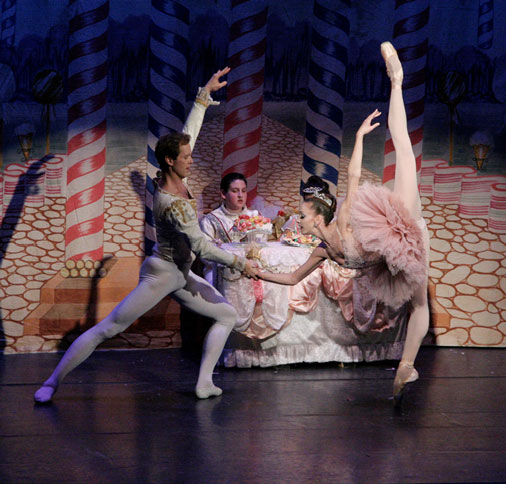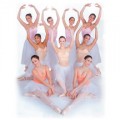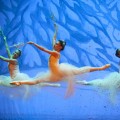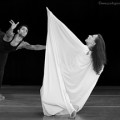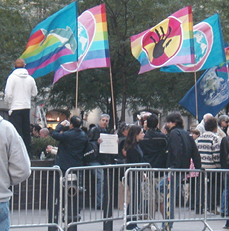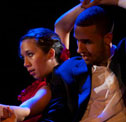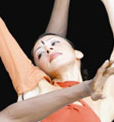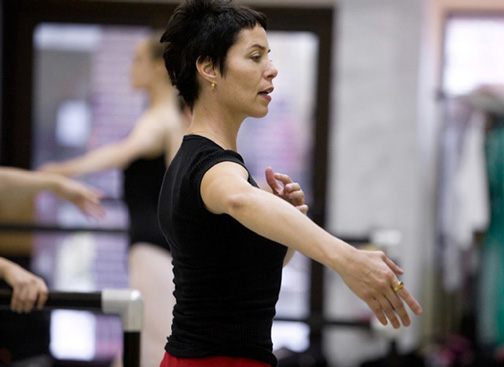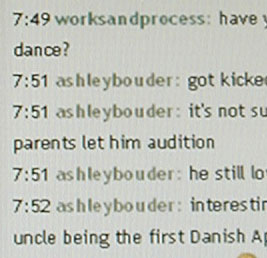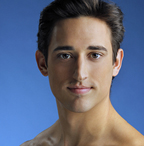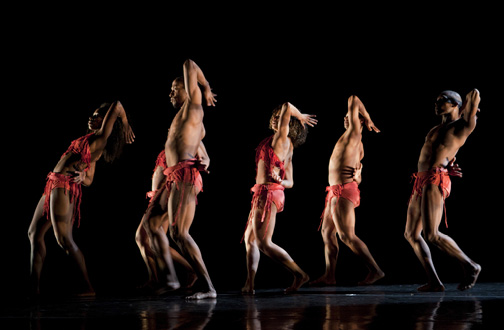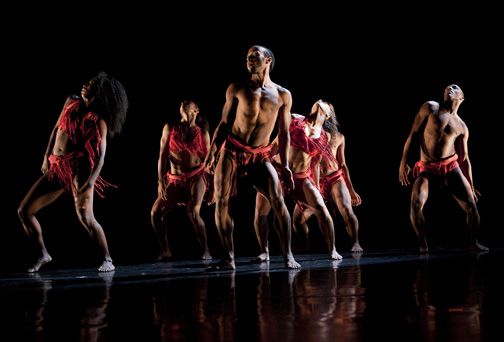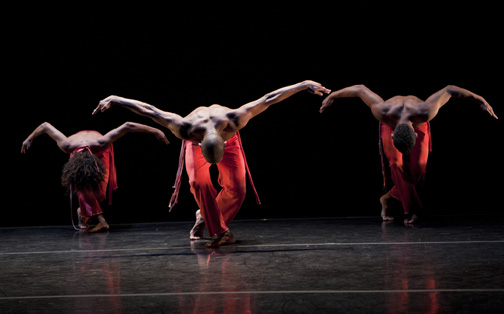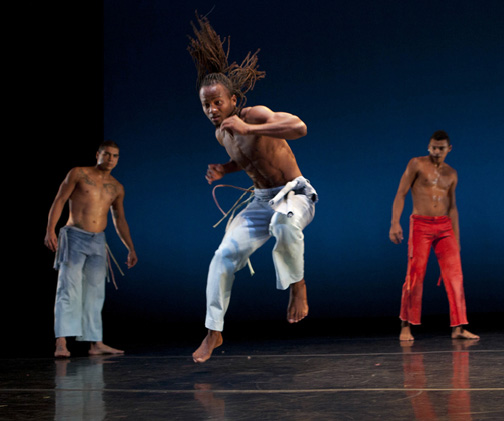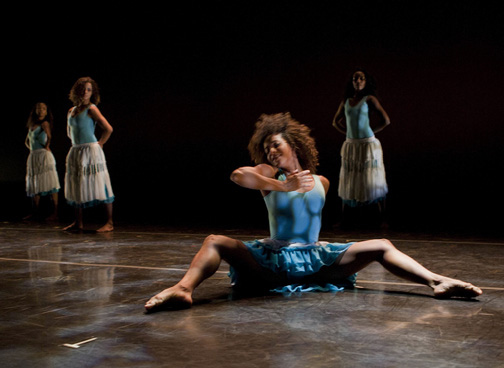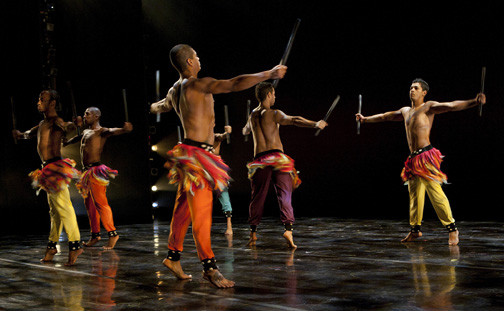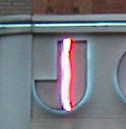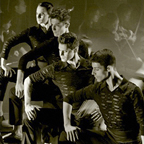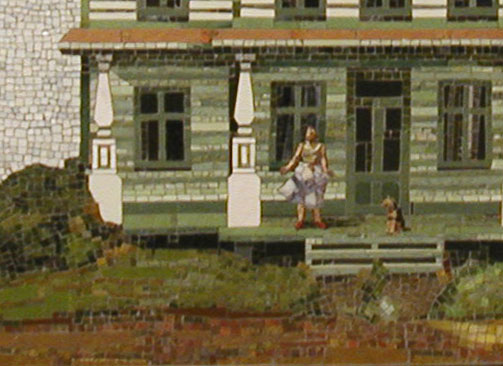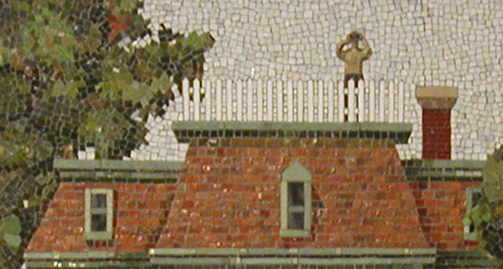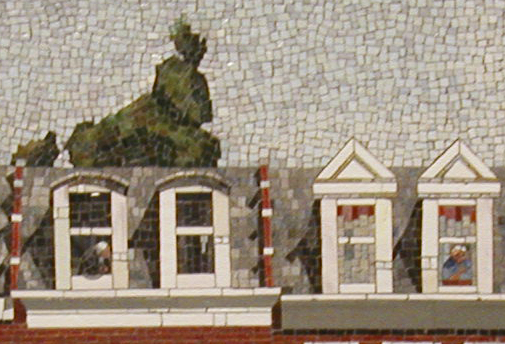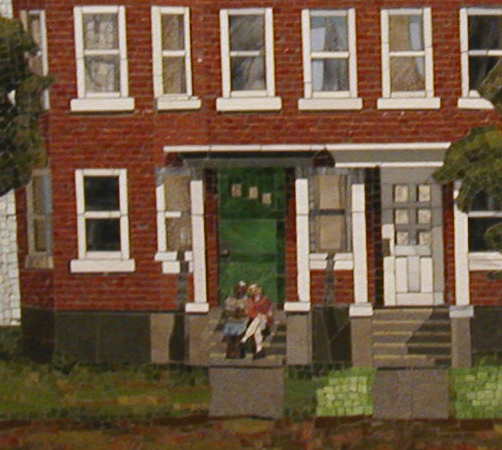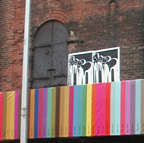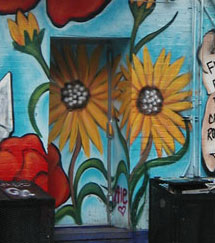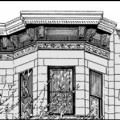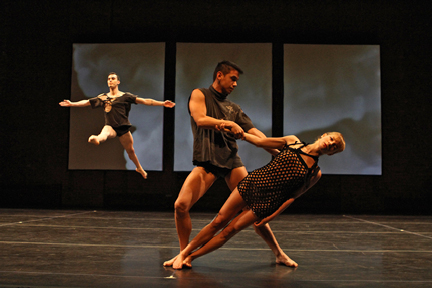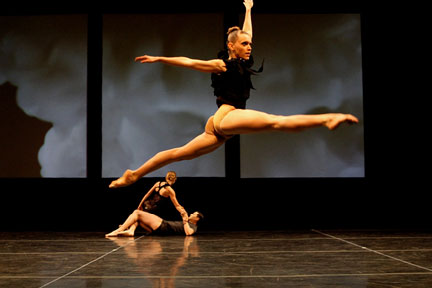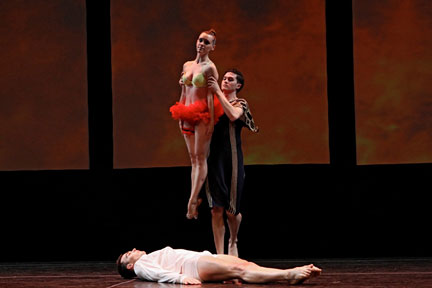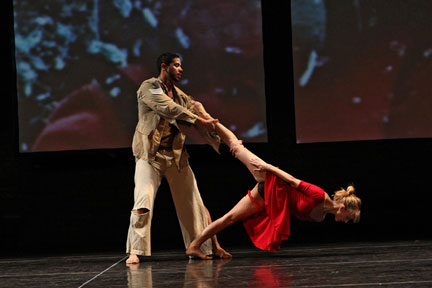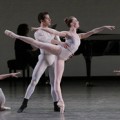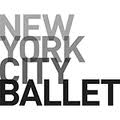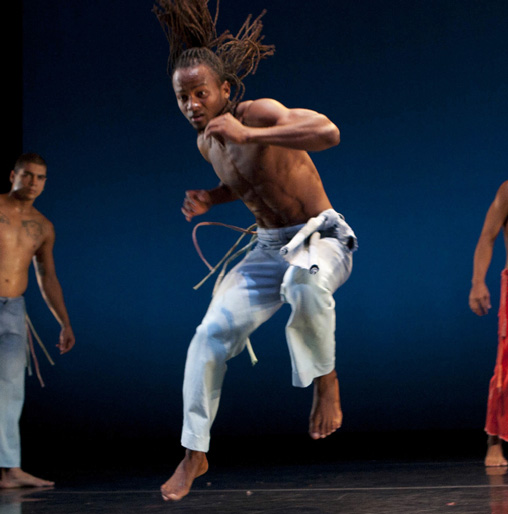Philadanco at the Joyce Theater
Wednesday, March 30, 2011
Philadanco’s dazzling performance kicked off with the sultry Bolero Too, choreographed by Christopher Huggins. As it opens, the dancers are seen in silhouette, lined up along the back of the stage, which is lit red. One couple comes forward to dance, and then another. Their movement is sensual, sleek jazz fused with modern. The women are dressed in red, each one with a red flower in her hair, while the men wear high waisted black tights and white shirts. As the familiar music builds, larger groups emerge.
The dance incorporates a variety of styles, from ballet all the way to break dancing turns on the floor and it moves from one to the next in a seamless fashion. One is never jarred by the transitions. The partnering is breathtaking, with huge high lifts and dramatic throws. The dancers are all elegance and passion, and while they appear to be swaying to the classic music, their bodies never stop. The choreography is intricate and demanding, the steps come fast and furiously, yet the dancers pace themselves so beautifully that none of it ever feels hurried or frantic. Their movement never loses its silkiness.
Choreographed by Urban Bush Women founder Jawole Willa Jo Zollar, By Way Of The Funk is all attitude, sheer fun and great entertainment. The dancers are dressed in black and silver, with no shortage of spandex, fringe, sequins and shining bellydancing coins. The piece starts as three soloists take turns grooving to excerpts from hits of the early 1960s. We hear echoes of Chuck Berry, James Brown, and Sly & The Family Stone. Then the piece hits its stride to the music of Parliament Funkadelic.
Yes, the movement is funky. It has great syncopation with stunning details such as
surprising grand jetes shimmering like fireworks where you’d least expect to see them. The dancers are having fun and their enthusiasm is infectious. One man, left alone on the stage, is so lost in the music that he might never stop dancing, until another man comes out to lay his hand on him and disrupt him. He pays him the ultimate compliment. “Cool!” “Cool?” the dancer checks. “Cool!” the man affirms. “Cool!” the dancer agrees.
Later on, during the Dance Chat, Artistic/Executive Director Joan Myers Brown admitted that she wasn’t convinced of the merits of this dance when she first saw it. Originally Zollar had proposed to create a ballet based on the life and work of Marian Anderson . But as Zollar was riding a train one day, she heard some funk music, and By Way Of The Funk was born. Philadanco had already secured a grant to do the Marian Anderson piece, but they were able to persuade the Powers That Be to fund By Way Of The Funk.
This piece showcases the depth of these dancers. During the Dance Chat, Choreographer Huggins stressed that the dancers have to know their bodies, their spine, their center, their placement, but they’ve also got to be able to get down in their knees and curve their backs. The dancers had to know how to “get down”, which is what they did from beginning to end of By Way Of The Funk
In Ray Mercer’s Guess Who’s Coming To Dinner, the fearlessness and the commitment of the dancers went into overdrive. At the center of the stage, there is a table that is four feet high. Throughout the dance, the various guests bring their ideas, opinions and beliefs to the table. I have seen this theme in dances before, but Mercer’s interpretation brought matters to a new level. Each guest at this dinner has a very strong presence and is speaking in a passionate artistic voice.
There is an underlying tension in the air. There are beats in the music that could be taken for a ticking clock, and eventually the beats of a metronome become prominent. The table (which is only 6 feet wide) is used to great affect. One dancer slides under the table and as she moves within this confined space, we can feel her frustration and the containment of her energy. When she finally bursts out and leaps up on the table, she seems to take flight, to be laying herself bare, to be unencumbered by what others may think of her. Mercer used the different levels to good effect, with dancers sometimes moving in unison, one on the table top and one on the stage. The bravura of this performance comes in the daring leaps that the women take from the table top. They leap up, as if on a high dive, and hurtle themselves with their legs open in a split, into the arms of the men. The degree of trust between the partners has got to be extraordinary. One false move, one moment of lost concentration and things could quickly turn dangerous.
The final piece of the evening was Enemy Behind The Gates, also choreographed by Huggins, about the “enemy” who dwells amongst the group, looking just like everyone else, appearing to be part of the community, but who isn’t what he or she seems. Ms. Brown referred to this dance as Philadanco’s Revelations, their signature piece.
(Ironically, the piece received its world premiere on September 10, 2001, and it seems quite prescient given the way that American life was about to tip the following day.)
There is a militaristic mood to this piece, from the uniform style costumes to the unison movement of the dancers. Though the movement is fluid, it conjures an atmosphere that is tense and rife with paranoia. Again it becomes evident that the choreographer is paying very close attention to every tiny detail in the music. Not a single note is lost, but the dance never seems too busy. This piece was also marked by dizzying turning sequences that come in rapid succession and change direction just as quickly. Just as I felt this raising gooseflesh on my arms, some of the turns landed in unpredictable off center poses that were just as breathtaking. And as in Bolero Too, there are dramatic and very high lifts.
The Dancer Chat was the icing on the cake of this amazing evening. Joan Myers Brown appeared with choreographers Christopher Huggins and Ray Mercer, who talked about their processes and took questions from the audience. Ms. Brown talked about the genesis of Philadanco, whose original focus had been to provide high quality dance training to African Americans, who (in the 1960s) were excluded from dance companies and educational programs. I got the feeling that providing education and training was still the highest priority for Ms. Brown. I loved it when she talked about her thought process in choosing choreographers and dances. She insists that her choreographers teach and spend time with the company, getting to know them really well. She doesn’t approve of just “teaching a routine”. Even after a piece has been set and performed again and again (the company tours forty weeks per year) the choreographer will still return to fine tune the dance.
This was an amazing and extremely uplifting night at the theater, in the presence of a remarkable group of artists.
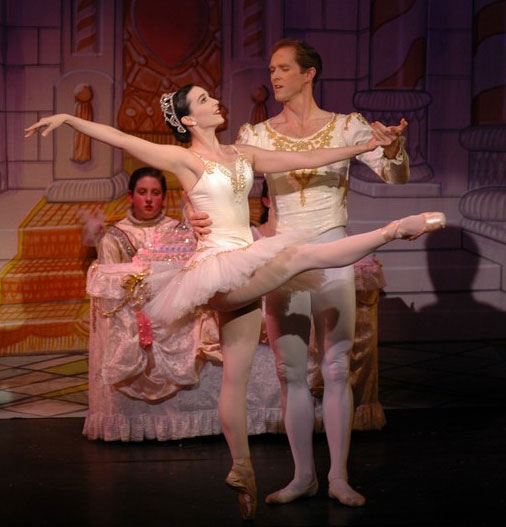
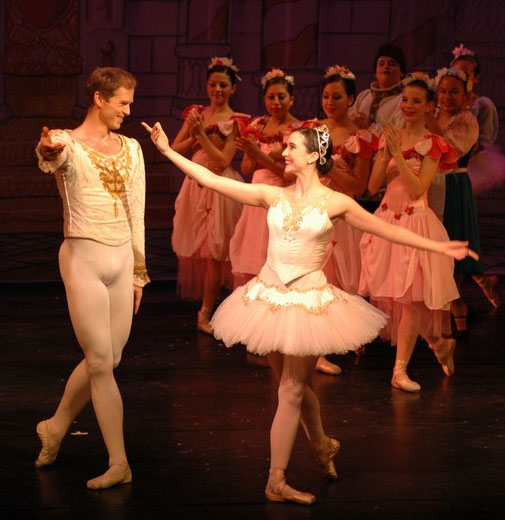 With Jenifer Ringer in 2006.
With Jenifer Ringer in 2006.
